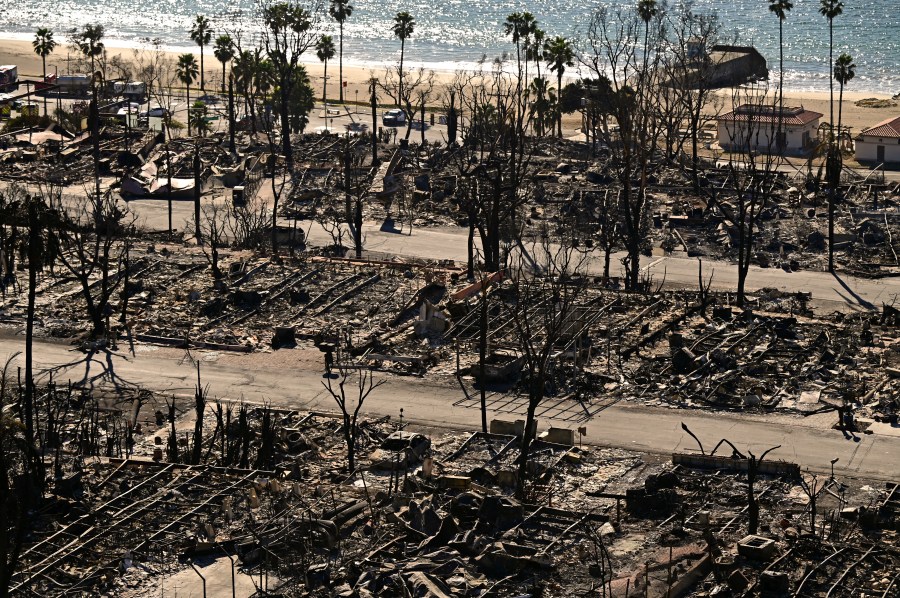
As fires continue to rage across Los Angeles, several power companies have declared their drinking water unsafe until extensive testing proves it is unsafe.
A warmer, drier climate means wildfires are worsening and entering cities, with devastating effects. Experts say toxic chemicals from these burns can end up in damaged drinking water systems, and filtering or boiling them won’t help.
Last week, Pasadena Water and Power issued “do not drink” notices to about one-third of its customers for the first time since it began rationing water more than a century ago. At least one pump was destroyed, multiple storage tanks were damaged, and a house was destroyed, indicating that toxic chemicals may have entered the pipes.
“We have to do an abundance of caution and plan for the worst,” said Stacey Takeguchi, the utility’s chief assistant general manager.
This week, they lifted the notification in most areas after testing.
Why urban fires pose a risk to drinking water
Large fires that occur in towns and cities rather than forests or grasslands can cause significant infrastructure damage. When a fire damages a drinking water system, “ash, smoke, soot, and other debris and gases can be sucked into the water pipe network,” says the Purdue University School of Engineering, which studies water contamination in fire-stricken areas. Professor Andrew Welton says: fire.
These elements can be particularly toxic, he said, because synthetic chemicals used in building materials and homes heat and burn, releasing particles and gases. Experts say some of these chemicals can be harmful even in low concentrations.
How chemicals enter pipes
Water systems usually have sufficient internal pressure to prevent harmful elements from entering. But during a fire, that vital pressure can be lost in a variety of ways, allowing toxins to enter.
There is usually demand on the water system by people who did not have to evacuate. Firefighters use a lot of water. Pipes in burned buildings can be damaged and water can gush out.
Greg Pearce, a professor of urban and environmental policy at the University of California, said if the pumps stop working, the loss of power can cause a loss of pressure. This happened during the 2023 Maui fires.
“Maintaining power supply to the entire water system in the event of a fire is extremely difficult, if not impossible, because power can contribute to a fire, Either you shut it down or the power just goes out,”’ Pearce said. “And at best you will be partially reliant on generators.”
Pressure loss can affect not only water quality but also the availability of water for firefighting. In the Pacific Palisades area, surrounding homes were on fire and fire hydrants ran dry. Utilities have maintained that demand was high and pumps were working, but California Gov. Gavin Newsom said the state would investigate.
What are the health risks?
Toxic chemicals in drinking water after a fire pose risks ranging from temporary nausea to cancer, experts say.
“Paradise (California) had benzene levels high enough to cause an acute blood disease in children,” said Dr. Lynn Goldman, director of the Milken Institute School of Public Health at George Washington University. I talked about this. most of the city.
Some chemicals may be of concern even at very low levels. State regulators in California say only one part in a billion of benzene, a known carcinogen, is considered safe in drinking water over 70 years of exposure. The national recommendation is 5 ppb or less.
“What we’re really interested in when it comes to cancer risk is the cumulative amount you’re exposed to over your lifetime,” Goldman said. real risk. ”
Benzene and similar compounds are known as volatile because they tend to become airborne, similar to gasoline, which turns into vapor when dripped into a car from a pump. A group of heavy compounds called semi-volatile organic compounds (SVOCs) were found in Louisville, Colorado water pipes after the 2021 Marshall Fire, but benzene and other well-known chemicals were not found. There wasn’t. Welton says it’s important to test for both.
What’s next?
More than 200 water utilities in vast Los Angeles County have so far issued “do not drink” notices, believing damage or pressure loss may have caused chemical contamination. There are only a handful of them. Utilities are focused on having enough water to put out fires, but some have begun testing for contaminants. It may take weeks or months for water to be declared safe for drinking in minimally affected areas.
Sometimes that’s the best-case scenario.
Most of the buildings burned in the Paradise Fire. The city is rebuilding the reservoir and replacing 10,000 service lines. The company plans to spend the next 10 years and $50 million replacing approximately 17 of the 172 miles of contaminated trunk lines.
Welton doesn’t recommend paying for expensive at-home water tests until the utility declares the public water system is safe.
Many publicly available water quality tests “cannot detect contamination of drinking water by fire,” Welton wrote in X this week. Once a public facility’s water is declared safe, having it tested by a professional is the best way to know if the pipes are contaminated, he said.
Until water is declared safe, people should follow guidance issued by public works or local health departments regarding safety precautions.
__
The Associated Press receives support for coverage of water and environmental policy from the Walton Family Foundation. AP is solely responsible for all content. For all of AP’s environment coverage, visit https://apnews.com/hub/climate-and-environment.
Source link




